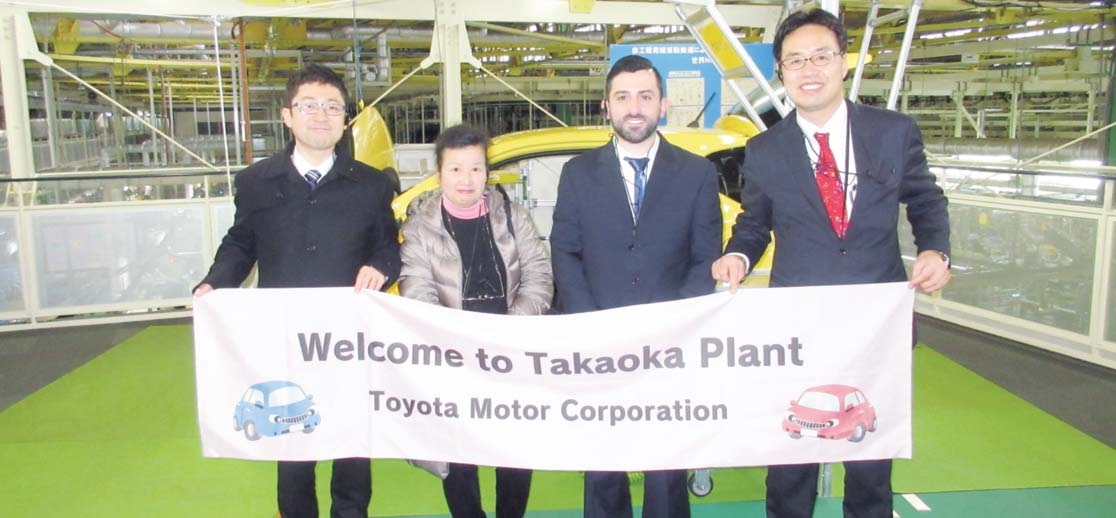Takaoka plant stands witness to the inspiring success story of Toyota
Besides 12 factories in Japan, Toyota has 54 plants in 28 countries and regions in the world. The famous Takaoka plant in Toyota city manufactures 1,400 Harrier, iQ, and Yaris cars, and operates five days a week according to shifts, as there are 4,400 workers besides the maintenance workers who work round-the-clock with robots, that play a large part in the four stages of manufacturing cars - formation, welding, painting and assembly.
Plant visitors get the opportunity to see the manufacturing of cars in various stages all the way to testing it to make sure it meets the standards and readiness for delivery, in a scene that is a true joy, and an example of management effectiveness at the production line level and caring for the environment and economy in consuming energy, besides the two general rules Toyota presented to the management science: Jidoka, which means machines will automatically stop when a defect is detected to prevent any faults; and Just-in-Time, which aims at producing what meets needs in time of need.
This besides its famous motto: “The customer is first”, and adopting kaizen or the continued development of human resources “We create high goals for ourselves, then push ourselves towards achieving them” is what is written on a banner at Toyota.

A group photo shows Mohammed Bassam Al-Husseini, Kayesuki Sito ,Yushitomo Kanihara and guide Natsuku Moramatso
Stages of a car production process go through four major steps:
Formation
Metal sheets are cut to form the car body parts, and this is done to the highest accuracy level and productivity due to the use of the best metal formation systems and high-speed robots.
Welding
A robot welds nearly 400 parts of the body to form the car, as state-of-the-art welding lines deal with different models in each production line, so complete car frames are produced with high accuracy.
Painting
After washing the car’s body, a foundation layer of paint is applied, then a middle layer, before the final coat to become of high quality. This process has become environment-friendly due to the use of most modern painting with water techniques.
Assembly
Engines are installed and fixed on the assembling line, designed to match workers’ situation. Other parts are also installed here, followed by tests, then making sure about the guarantees during the final inspection process before approving the shipment of manufactured cars.
More than nine million cars in 2014
Toyota plants in Japan produced 3,266,805 vehicles in Japan during 2014, and 5,738,020 in the rest of the world, so it supplied the market with 9,004,825 vehicles.
Thanks
We thank the assistant director at the strategic planning department at Toyota Kayesuki Sito and his colleague, the deputy group director at the sales and marketing department Yushitomo Kanihara for coming to Toyota city to receive us and joining us during our tour of the plant.